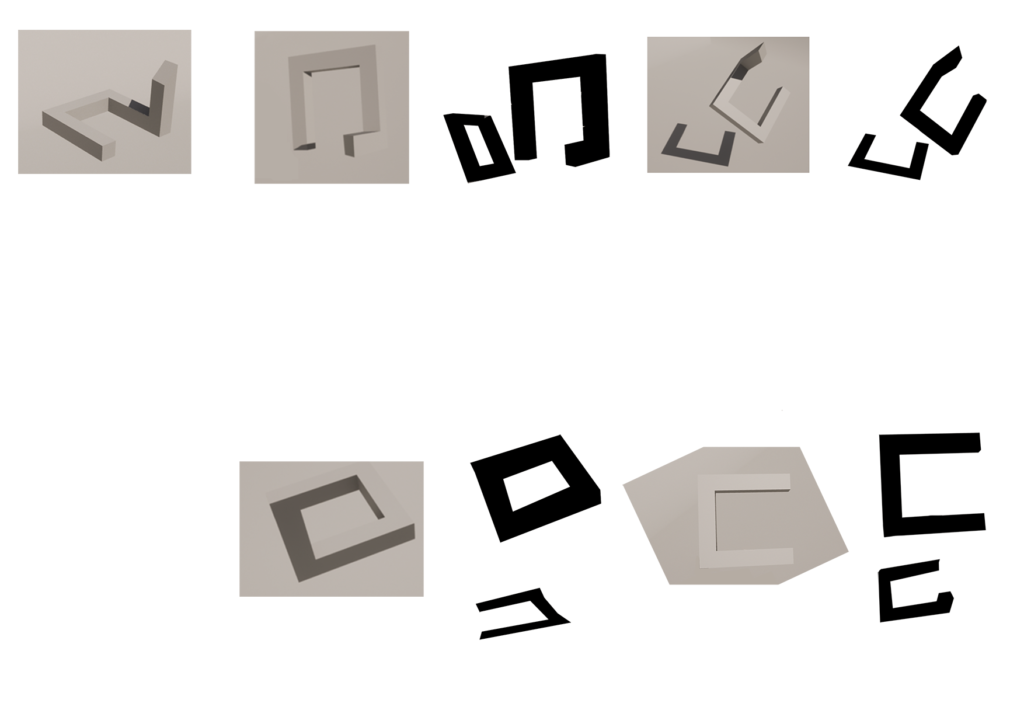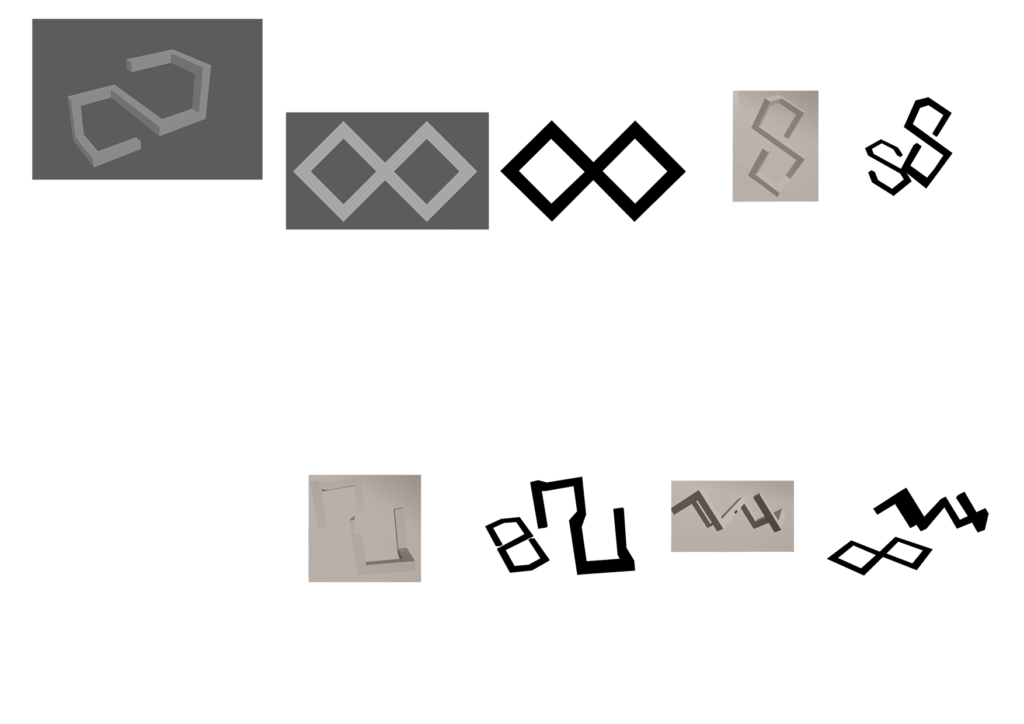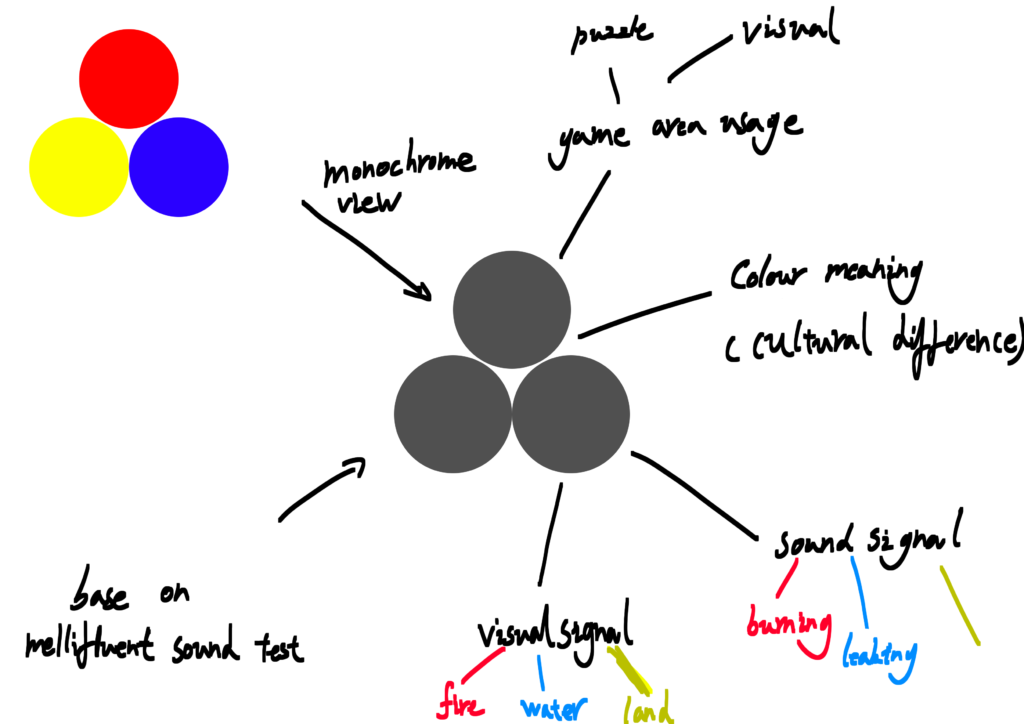Formative Assessment
DESIGN PRACTICE I
5 Keywords I choose:
surreal nomadic mellifluent foreshadow mercurial
I did not spend too much time selecting these five keywords. I chose them with a desire to challenge myself. As these practices can fail, I am curious about what kind of work I can create by using these themes (keywords) that I do not often encounter, based on my research direction.
I began to define the keywords “Surreal,” “nomadic,” “mellifluent,” “foreshadow,” and “mercurial” based on my personal curiosity, cognition, and association. I then transformed them into different visual elements, design elements, and gameplay elements.
I have to consider how these keywords can be presented in my research direction, and how they can be presented in the game production process through interesting gameplay, environments, and captivating elements.
Possible research topic mapping:
How to create interesting gameplay using these 5 keywords?
How can I create puzzles using illusion elements that make players think? Which game has good puzzle design that I can study with and inspire me on my level design?
What level can I design using the keywords surreal that can support the puzzle elements in the game?
What story can I come up with using the world nomadic? Why do p98I7UGFEzeople decide to close their hearts and start to self-isolate? Is this something I can describe using environment storytelling?
How to create uncanny environment when players cant see, how to pass correct sound to help players understand something? What design can I apply to sound to make it more useful or apply it in to puzzle?
Surreal: illusion-angles-dream like-uncanny- coincidence
The word ‘surreal’ doesn’t need much in-depth analysis and research, as it is already a design or artwork genre. Many artists have interpreted surrealism and output artwork on it, so I believe the concept of surrealism has already reached a relatively complete stage.
As a game designer, I feel that the word ‘surreal’ can be used as a keyword for environmental visual design. Combining various objects and human species to create strange and absurd scenes can effectively arouse players’ interest and curiosity. Turn the thought into a question: How can I create an uncanny environment with surreal elements?
My analysis of the word comes from three aspects: sensory/perception, included elements, and my personal thoughts. After divergent thinking, my intuition connects surrealism with illusion because many works of surrealism are bizarre and absurd. This bizarre and absurd can make different people hold different cognitions, understandings, and thoughts about it, reminding me of visual illusions.
I think that in surreal, different interpretations by individuals, correspond to different observation angles in visual illusions. The illusion will be working or creating new things, looking, thinking at a certain angle.I believe” illusion” can bring more design aspects to environments from a game designer’s perspective. It can serve as denial elements in game levels by adding challenges and difficulty and blocking the players from success, which is winning the game. Adding the word illusion to surreal opens up another way to create and design the environment.
Nomadic: self isolation – lonely – psychology -difference – culture
I separated the exile from Nomadic. I believe that a exile does not necessarily refer to homeless people or vagrants in society, it can also refer to individuals who have closed themselves off emotionally. These individuals may be unable or unwilling to integrate into society due to reasons such as physical disabilities or personal characteristics, making them psychological exile. They become disconnected from social and societal norms.
My personal reflection is that this can be an element within the background of a game, its story, or where players are located. It can also apply to a character’s appearance, behaviour, and doing, which separates them from other groups/society and makes them exiled. However, I did not delve too deeply into it, as it is a support word because I don’t feel that word support too much on my research area.
Mellifluent: sound – representing – sound signal – meaning of sound
This word was chosen as a challenge to myself, as I’m unfamiliar with it. This is not a word I would use to design something or even speak out in life. Based on my own research and imagination, I defined Mellifluentas sound. As a sound, I extended it to sound effects it made me think about how a sound effect represents or forms information.
Will different cultures have different reactions and understandings of the same sound or sound effect? Especially in the game production process, game developers have to create sound effects on game objects or actions. How can I apply this sound effect to the game environment to make it more uncanny or illusionary? Or can I design something that enhances gameplay through sounds?
My testing method is to use sound to represent the surface, objects, and materials of certain items. Represent the information to the audience through sound instead of relying on visual perception by directly observing the appearance of these items. (Week 2 Mellifluent)
Foreshadow: shadow – colors -solid color – metaphor
The word ‘Foreshadow’ gives me an intuitive feeling that it is related to time. After sensing or predicting what will happen in the future, as a person, as a human, there is a high chance of using this foreknowledge to do something. However, this behaviour can also lead to changes in the future. In the thinking of a game designer, things about time can be used to expand the game machine and build the game base on it.
But actually, a keyword that interests me more is the ‘shadow’ in the second half of the word ‘Foreshadow’. Because the shadow is an object that blocks the propagation of the light and creates a darker colour area where the light can direct shine, also reminds me of the word solid colours. Solid colours make me think of black-and-white movies like Schindler’s List. The little girl in the red coat is the only character in this black-and-white movie with a unique red colour. Strong visual contrast can trigger people’s thinking about why it has colour and its meaning. This makes me think about what I can make players reflect on, understand or ponder if I use similar visual techniques in games.
Mercurial: changeful – intelligent – thinking
This word was also chosen as a challenge to myself, as I am unfamiliar with it. The understanding of the word ‘mercurial’ is that it is changeable and wise. From a game design perspective, being changeable can be used as a style for designing game levels, in-game environments or gameplay, while the keyword ‘mercurial’ makes me think about what makes people clever and smart?
My extension of this is that thinking and reflecting make people intelligent. How can I map this thinking and reflecting progress that makes people smart in a video game?
Mellifluent: sound –representing – sound signal – meaning of sound
Environment sound (answer at the end )
Item and ActionSound (answer at the end )
a sound in progress (answer at the end )
1. Ocean 2. Slient mountain 3. scrathing a tetile object 4. knocking on wood 5. Fire(burning )
Sound effect test:
Based on my own analysis of the keywords Mellifluent and mercurial, I have decided to combine the two keywords sound and thinking together for a simple test.
I will analyze my personal definition and understanding of sound. Afterwards, I plan to use the method of ‘audition’ to understand the meaning/definition of the sound I created from other people’s perspectives. Through this, I will look for possible conflicts and whether my design represents the perspective of most people.
At the same time, I also need to consider if someone objects to the definition of the sounds, whether their objection is valid. See whether they are representing the majority or the minority. Do I need to create a process for people to understand and comprehend my sound effects so that everyone can understand the meaning behind it? After the test, I need to think about applying sound and using it as an element for people to understand without observation. How can I apply it to game design progress? And how does this sound element communicate with other elements?
The testing process is not complicated. Firstly, I collected different sound materials. After that, I classified the sounds into basic types such as environmental sounds, object interaction sounds and something happing sounds. Then, I removed all elements that can provide visual information because this test is about people’s understanding of sound. I need to know if they can realize objects or understand meanings through sound alone without any visible objects.
I have chosen five sounds for testing, including the
sound of the ocean,
the quiet sound of a mountaintop,
the sound of wood being struck,
the sound of rubbing mouse,
and the sound of burning firewood.
Many of these sounds are highly symbolic voices, for example waves crashing or sparks flying from burning wood provide clear indications that make it easy for people to understand and know what they represent.
The test results also showed that everyone can understand the sound of the ocean by listening, because the sound of waves hitting the beach and crashing against rocks is very representative and can help people associate sounds with the actual environment. On the other hand, the quiet mountain top sound effect does not contain highly symbolic voices, so most people feel confused and do not know its specific location or scene. They can only understand it as an environmentally sound due to the presence of wind noise.
So the test conclusion is that if there are highly symbolic voices in the sounds emitted by an object or environment, they can be used to replace visual symbols to express certain objects or meanings.
This makes me wonder whether I can accurately convey the meaning of a sound without a specific physical object, using highly symbolic voices, similar to those used in ocean sound testing. In this case, I believe that I need to narrow down my testing area based on the project I am researching, which is related to gaming.
Next, I need to think about what elements in the game can be removed visually and still be understood by players through sound effect only.
After thinking about it, I believe that danger can be conveyed through sound effects without the need for visual objects. For example, different types of danger such as fire, deep water, and traps can have their own unique sounds. These elements can change according to the player’s progress in the game or level they are currently in, used to create different challenges for players.
So next, I plan to mix and test the prompted sound with different highly symbolic voices.
Illusion Test:
Based on my analysis of the keywords, I have decided to combine elements such as illusion, a different perspective, different ways of thinking, shadows, solid colours, thinking and variation from surreal, mercurial and foreshadowing to create items with a sense of illusion.
The main purpose of this test is to investigate and test the existing materials and methods that can create illusions. Consider how to use 3D techniques to present these illusions, as well as how to apply them in game design.
3D Model Test:
I first used 3D modelling software to create two strange models to test whether they could create illusions in a 3D game engine through different perspectives and camera angles.


The result is positive, by rotating the model itself without being affected by shadows, a different model can be created to achieve the word ‘illusion’.
Later, I collected screenshots of their shadows from different camera angles and found that more changes or shapes could be achieved through shadows. However, I don’t know how to make the shadows interact with the player in the game production process. I think I may not be able to use shadows as an element for deeper design.
More testing is still needed, but most of it will be focused on gameplay and puzzle design. I plan to learn how to create the postictal illusion effects using the game Monument Valley.
Futher explorations
Surreal Mellifluent Nomadic Foreshadow Mercurial
In the second week’s class feedback, Sue wondered how colour-blind people interpret coloured warning areas in weather forecasts. This topic inspired me to incorporate this colour-blind perspective into game design progress and combine keywords such as mellifluent, foreshadow, nomadic, and Mercurial to think about how to express colours other than black and white in a ‘v’ view (new word from foreshadow).
I plan to use visual signal (surreal) and sound signal (Sound) to express a different way of showing colours in a monochrome view. I will only do tests on the primary colours (solid colours) and explore the possibility of applying this expression method to gameplay.
